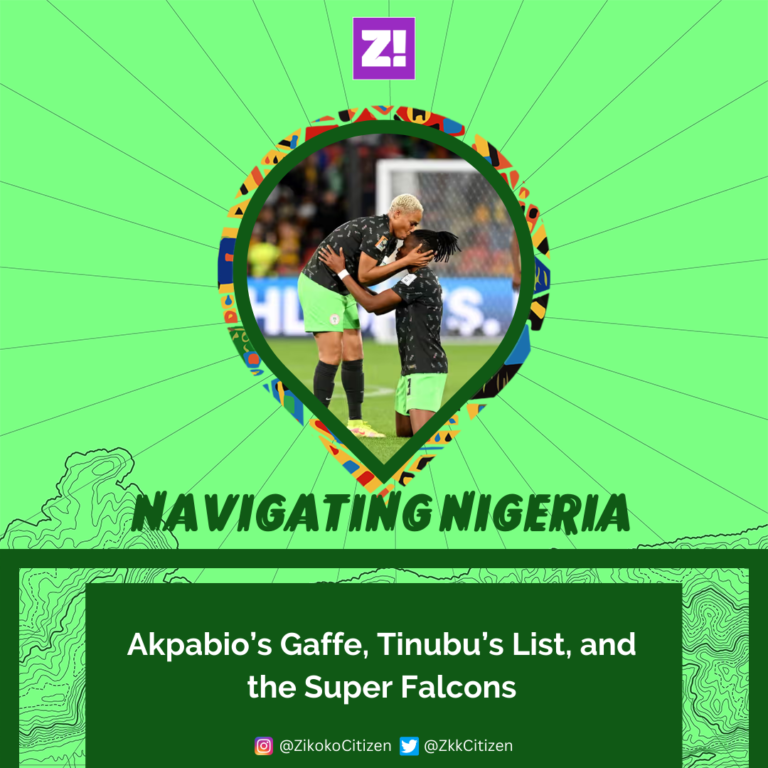On March 17, 2023, President Muhammadu Buhari signed the Copyright Act of 2022 into law. Reactions to it have been largely positive, with Buhari assenting to a flurry of bills in the twilight of his presidential career. This contrasts sharply with his early days in office, where he seemed to drag his feet, earning the nickname “Baba Go Slow.”
The 68-page Copyright Act was gazetted on March 27. That’s a fancy way of saying the Act was officially made public. We looked into it and highlighted some of the interesting points.

The 2022 Copyright Act is an improvement on an older one
This means the Act wasn’t created from scratch. There already existed a Copyright Act from 2004, which was inadequate to address some of the modern changes that deal with intellectual property rights. So they repealed the old one and enacted a new one after the National Assembly ratified it. Buhari signed it into law.

The Copyright Act covers a wide range of work
The following are eligible for copyright protection:
(a) literary works;
(b) musical works;
(c) artistic works;
(d) audiovisual works;
(e) sound recordings; and
(f ) broadcasts.
But there are some caveats. Literary, musical or artistic work isn’t eligible for copyright unless you put effort into creating it to give it originality. Also, the work being done needs to be fixed in a way that can be seen, copied, or communicated using any technology that currently exists or might be invented in the future.
Not every work is eligible for copyright protection
Not all work is covered by the Copyright Act 2022. These include:
(a) ideas, procedures, processes, formats, systems, methods of operation, concepts, principles, discoveries, or mere data;
(b) official texts of a legislative or administrative nature as well as any official translations, except their compilations; and
(c) official state symbols and insignia, including flags, coat-of-arms, anthems, and banknote designs.
The Copyright Act confers moral rights on authors
Section 14 of the Act covers the moral rights of authors. It explains the rights of someone who creates works like books, songs, or paintings. They have the right to say that they made it and to have their name on it whenever it’s used. An exception is when the work is incidentally or accidentally included in a broadcast when reporting current events.
If someone tries to change their creation to make the creator look bad, they can sue. Also, if someone tries to take credit for something they didn’t make, the actual creator can object and say it’s not true. These rights can’t be given or sold to anyone else while the author is still alive.
However, after the author dies, rights can be given to someone else through a will or laws that decide who gets the rights. The rights last for as long as the copyright lasts. This means no one else can use or copy the work without the copyright holder’s permission.
Copyright duration
For literary, artistic and musical works that aren’t photographs, the copyright lasts for 70 years after the person who created them dies. For work derived from Section 7 of the Act, which deals with online content, the copyright duration is 50 years after the end of the year in which the work was first made available to the public.
If the work has not been made public within that time, it will be 50 years after it was created. The same applies to audiovisual works, photographs and sound recordings.
If someone creates a work under a pseudonym or anonymously, the copyright lasts for 70 years from when the work was first made public or 70 years from when it was created if it wasn’t made public. But if the actual author becomes known, the copyright lasts 70 years after the author’s death, like with other works.
If two or more people worked together to create something, the copyright lasts until the last surviving author dies, and then it’s protected for 50 or 70 years, depending on the type of work.
Copyright exceptions exist for the blind and visually impaired
While copyright laws state that you must seek permission from authors before reproducing work, there are exceptions to this in the case of people who are visually impaired or blind. For this class of people, it’s permissible to reproduce work without permission in a way accessible to them, as long as the distribution is limited to only affected individuals.
The National Copyright Commission (NCC) recently hailed this provision, calling it “blind-friendly and sufficiently balanced in so many other areas to meet the demands of rights owners and the needs of users.”
You can download the full version here if you’d like to learn more about the Copyright Act.





